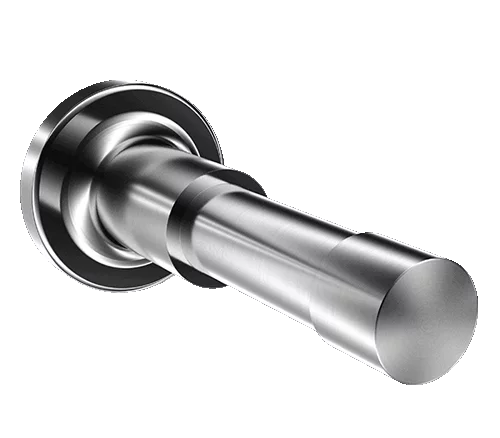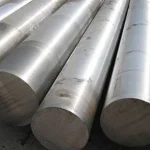Introduction

In the realm of construction materials, hot rolled steel holds a significant position due to its various advantages over other types of steel. This blog explores the distinctive benefits of hot rolled steel and its applications in modern construction projects.
What is Hot Rolled Steel?
Hot rolled steel is a type of steel that is formed by rolling at high temperatures. This process allows for the shaping of steel into various forms, making it versatile for structural and industrial applications.
Key Advantages of Hot Rolled Steel
Hot rolled steel offers several advantages that make it a preferred choice in construction:
- Strength and Durability: Hot rolled steel exhibits high strength and durability, making it well-suited for heavy-duty structures such as skyscrapers, bridges, and industrial buildings. Its ability to withstand immense pressure and weight ensures long-term structural integrity, providing reliability in critical applications where safety and longevity are paramount.
- Cost-Effective: The production process of hot rolled steel is not only efficient but also economically advantageous. The high-volume manufacturing capabilities and relatively simple processing contribute to lower production costs compared to other steel types. This affordability makes hot rolled steel a preferred choice for large-scale construction projects where budget considerations are crucial, without compromising on quality or performance.
- Malleability: Hot rolled steel’s inherent malleability allows it to be easily shaped and formed into various configurations, including beams, channels, and plates. This versatility in shaping is crucial for architects and engineers who require customized structural components tailored to specific project requirements. Whether forming complex architectural designs or fabricating standardized structural elements, hot rolled steel maintains its integrity throughout the shaping process, ensuring consistency and reliability in its mechanical properties.
Applications in Construction
Hot rolled steel finds extensive use in construction:
- Structural Beams: It is commonly used for beams and columns in building frames.
- Pipes and Tubes: Hot rolled steel is ideal for manufacturing pipes and tubes used in infrastructure projects.
- Building Facades: Its aesthetic appeal and durability make it suitable for architectural facades.
Environmental Impact
Despite its benefits, the production of hot rolled steel can have environmental implications:
- Energy Intensive: The high temperatures required for hot rolling steel indeed contribute to significant energy consumption, primarily due to the large furnaces and extensive heating processes involved. This energy-intensive nature necessitates ongoing efforts within the industry to develop more efficient heating technologies and to explore alternative energy sources to mitigate environmental impacts while maintaining production efficiency. Despite these challenges, advancements in energy recovery systems and process optimization continue to reduce the overall energy intensity associated with hot rolled steel production, thereby improving sustainability metrics and operational costs over time.
- Emissions: Production processes of hot rolled steel can result in the emission of greenhouse gases such as carbon dioxide (CO2) and other pollutants, including particulate matter and nitrogen oxides (NOx). These emissions stem from various stages of steel manufacturing, including combustion processes in furnaces and transportation activities. To address these environmental concerns, manufacturers are increasingly adopting emission control technologies, such as scrubbers and filters, to minimize pollutants released into the atmosphere. Additionally, ongoing research focuses on developing cleaner production methods and enhancing recycling practices to further reduce the environmental footprint of hot rolled steel production, aligning with global efforts to combat climate change and promote sustainable development.
Comparing Hot Rolled Steel with Other Types
| Property | Hot Rolled Steel | Cold Rolled Steel | Stainless Steel |
|---|---|---|---|
| Strength | High | High | High |
| Surface Finish | Scaled | Smooth | Smooth |
| Cost | Lower | Higher | Higher |
Sustainability Efforts in Hot Rolled Steel Production

To mitigate environmental impacts, manufacturers are exploring:
- Recycling: Recycling scrap steel not only reduces the demand for raw materials but also contributes to environmental conservation by minimizing mining activities and reducing landfill waste. It promotes a circular economy where steel can be continuously reused, conserving natural resources and lowering overall carbon emissions associated with steel production. Moreover, recycled steel often requires less energy to process than raw materials, further enhancing its environmental benefits and economic feasibility in sustainable construction practices.
- Energy Efficiency: Improving energy efficiency in the production processes of hot rolled steel involves implementing advanced technologies and optimizing resource utilization throughout manufacturing stages. By adopting energy-efficient practices such as using renewable energy sources, optimizing furnace operations, and enhancing heat recovery systems, manufacturers can significantly reduce their carbon footprint and operational costs. These initiatives not only benefit the environment but also enhance the competitiveness of hot rolled steel by aligning with global sustainability standards and regulatory requirements.
Conclusion
Hot rolled steel remains indispensable in the construction industry due to its strength, cost-effectiveness, and versatility. Despite environmental concerns, ongoing efforts towards sustainability promise a greener future for this crucial material.
FAQ
Q: Is hot rolled steel stronger than cold rolled steel?
A: Yes, hot rolled steel generally has higher strength compared to cold rolled steel due to its manufacturing process.
Q: What are the main uses of hot rolled steel in construction?
A: Hot rolled steel is used for structural beams, building frames, and architectural facades, among other applications.
Q: How does hot rolled steel compare with stainless steel?
A: Hot rolled steel is stronger and more cost-effective than stainless steel but lacks the corrosion resistance of stainless steel.
